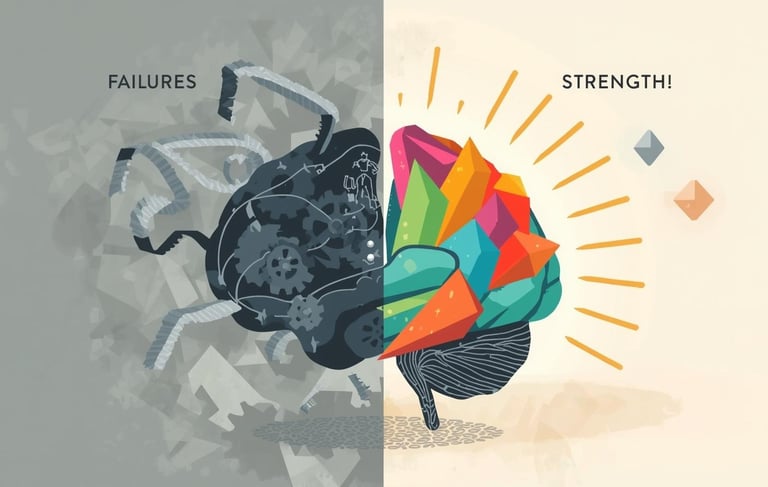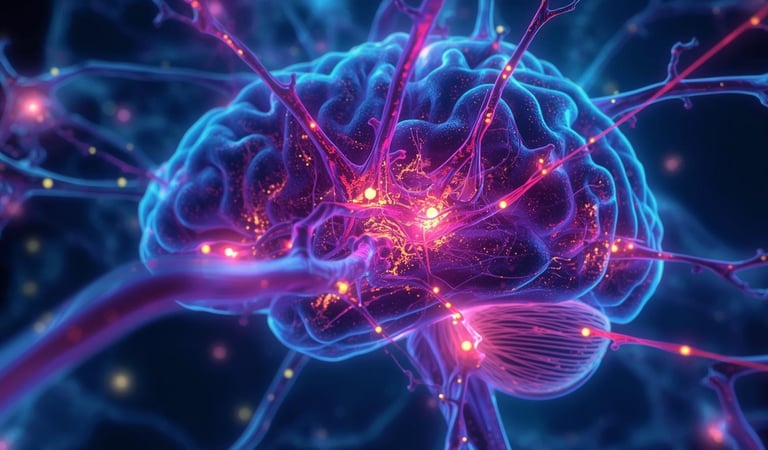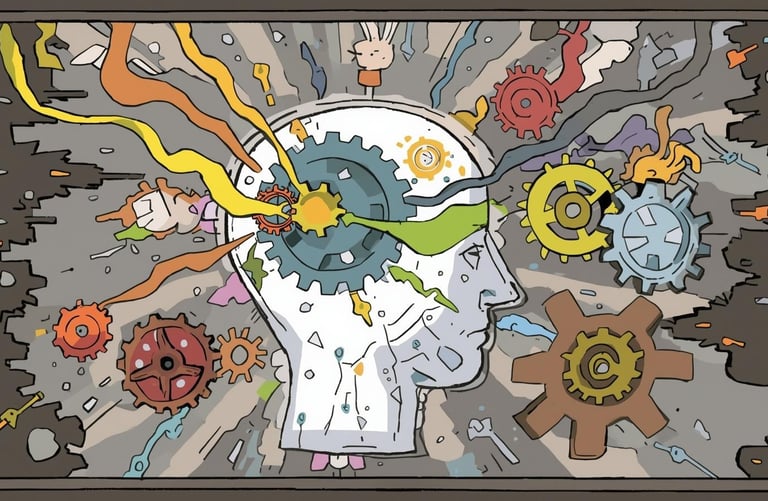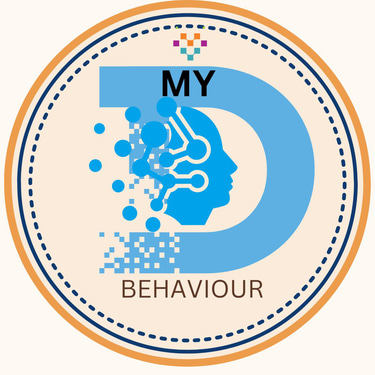Struggles, Failures & Breakthroughs: The Cognitive Reframing of Rejection
“Learn how rejection and struggle become the cognitive training ground for immortal creativity.” Part 3
Gajanan L. Bhonde
9/26/202512 min read


Introduction: The Paradox of Rejection
Rejection is frequently viewed through a negative lens, often provoking feelings of disappointment and self-doubt. However, this perception overlooks the potential benefits that rejection can bring to an individual's personal and professional growth. In an era where success is glorified, the struggles associated with rejection are often dismissed. Yet, it is essential to recognize that facing setbacks can serve as an invaluable catalyst for creativity and innovation. While the experience of being rejected may be emotionally taxing, it also presents unique opportunities to reflect and reevaluate one's goals and aspirations.
The cognitive reframing process enables individuals to shift their perspectives on rejection from something purely punitive to a springboard for advancement. When one is faced with rejection, it instinctively triggers a defensive response, leading to feelings of inadequacy. However, by consciously reframing this experience, individuals can cultivate resilience, encouraging them to view rejection as a stepping stone rather than a stumbling block. This shift in mindset can foster a more profound understanding of one's strengths and weaknesses, ultimately contributing to enhanced self-awareness.
Moreover, the paradox of rejection enhances the creative process. Artists, entrepreneurs, and innovators often recount experiences of initial rejection that precipitated their eventual breakthrough. Such narratives exemplify the notion that struggles and failures can ignite the spark of creativity, pushing individuals to explore uncharted territories. In this context, rejection serves not only as a source of pain but also as a vital component of the journey toward eventual success.
As we delve deeper into the themes of struggles, failures, and victories, it is crucial to embrace the idea that while rejection can be daunting, it can also facilitate profound personal transformation and growth. This exploration will reveal how cognitive reframing allows individuals to harness the power of rejection as a tool for innovation.
Cognitive Reframing: Transforming Failures into Strengths
Cognitive reframing is a psychological mechanism that enables individuals to shift their perspective on negative experiences, such as failures, viewing them instead as opportunities for growth and creative expression. This cognitive process involves altering one's interpretation of a situation to foster a more positive outlook. Research in cognitive psychology suggests that the way we frame our experiences significantly influences our emotional and behavioral responses. By changing the narrative surrounding failure, we can transform setbacks into avenues for strength and resilience.
One prominent theory that underpins cognitive reframing is the concept of cognitive appraisal, proposed by Richard Lazarus. This theory posits that the interpretation of stressors, including feelings of rejection or failure, can impact one's emotional state. If an individual can appraise a failure as a learning opportunity rather than a definitive end, they are likely to develop a more adaptive response. For instance, an artist faced with criticism of their work may choose to see this critique as constructive feedback, guiding their future creations, instead of succumbing to discouragement.
Indeed, there are numerous practical examples of individuals who have successfully applied cognitive reframing in their lives. Consider Thomas Edison, whose numerous failed experiments with the light bulb did not dishearten him but rather fueled his determination. He famously articulated that he had not failed, but had successfully discovered thousands of ways that would not work. This mindset allowed him to secure his place in history as a prolific inventor.
Moreover, by viewing failures through the lens of cognitive reframing, individuals can cultivate strengths such as resilience, adaptability, and creativity. These qualities emerge as they learn to manage the emotional impact of rejection, ultimately leading to breakthroughs in both personal and professional realms. Thus, embracing a reframed perspective on failure not only paves the way for personal development but also significantly enriches one's life journey.
The Science of Neuroplasticity and Resilience
Neuroplasticity refers to the brain's remarkable ability to reorganize itself by forming new connections in response to learning experiences, environmental changes, and challenges. This dynamic capability is crucial for developing resilience, particularly in the context of innovation where individuals often encounter rejection or failure. The interconnection between neuroplasticity and resilience can be observed in various studies indicating that those who embrace challenges, rather than shying away from them, engage in a continuous cycle of learning and adaptation.
Research demonstrates that repeated exposure to stress or adversity can lead to structural changes in the brain. For example, individuals who face setbacks are often prompted to re-evaluate their approaches. This process requires not only the ability to accept the situation but also the cognitive flexibility to adapt thought patterns. Such cognitive reframing is essential as it enables innovators to view failure not as a definitive endpoint but as a stepping stone towards eventual success. The brain's malleability allows the integration of new strategies and perspectives, fostering a growth mindset which is integral to resilience.
One particularly illuminating study published in the journal "Nature" highlights how neuroplastic changes can enhance emotional regulation, thereby enabling individuals to cope better with stressors related to rejection. This emotional resilience becomes increasingly vital in creative fields where the risk of criticism is inherent. Moreover, findings indicate that mindful practices, which often promote neuroplasticity, can significantly bolster an individual’s capacity to face challenges with a positive outlook. Innovators who actively engage in reflective practices tend to nurture stronger neural pathways associated with adaptability and recovery from setbacks.
In essence, the capacity for our brains to change and adapt underlines the profound relationship between neuroplasticity and resilience. By consciously fostering this adaptability through persistent effort and a willingness to learn, individuals can emerge stronger from experiences of rejection and failure. This resilience ultimately paves the way for transformative innovation and personal growth.
Lessons from Historical Icons: Van Gogh, Tesla, and Mirabai
The narratives of historical icons such as Vincent van Gogh, Nikola Tesla, and Mirabai serve as profound case studies on the impact of rejection and the subsequent triumphs that can emerge from personal struggles. Each of these figures faced significant challenges and failures during their lifetimes, yet their contributions have left an indelible mark on society, demonstrating the potential for cognitive reframing in the face of adversity.
Vincent van Gogh is often considered a quintessential example of an artist who struggled against rejection. Despite his immense talent, van Gogh sold only a handful of paintings during his lifetime and was largely unrecognized. His emotional and psychological battles, compounded by severe mental health issues, often overshadowed his artistic brilliance. Yet, posthumously, van Gogh's works garnered worldwide acclaim, influencing countless artists and evolving into a key pillar of modern art. His ability to express deep human emotions through vibrant colors and brush strokes highlights how rejection can drive an individual to push creative boundaries further, ultimately leading to success long after their struggles.
Similarly, Nikola Tesla encountered significant rejection and skepticism throughout his career, particularly undermined by contemporaries and business rivals. Although he pioneered numerous technologies, including alternating current electricity and radio, it was often overshadowed by the achievements of others, such as Thomas Edison. Tesla's relentless pursuit of innovation, despite the lack of appreciation during his life, ultimately established him as a foundational figure in modern electrical engineering. His story exemplifies how failures, often perceived as setbacks, can fuel breakthroughs that resonate through history.
Mirabai, the mystic poet and devotee of Lord Krishna, faced rejection from her family and society due to her unconventional views and deep spiritual devotion. Nonetheless, her verses of love and longing transcended the limitations imposed upon her, establishing her as a revered figure in Indian spiritual literature. Her ability to reframed rejection into a powerful expression of devotion underscores the potential for personal struggles to elevate one's legacy.
Mind Exercises: Turning Rejection into Re-Invention
Rejection can be a powerful emotional experience, but it also presents an opportunity for growth and creativity. Practicing specific mind exercises can help individuals transform feelings of rejection into pathways for re-invention. One effective technique is journaling, which involves writing down thoughts and feelings about a rejection experience. This exercise allows the individual to process emotions and reflect on the circumstance, ultimately fostering a greater understanding of the self. Journaling can illuminate patterns and beliefs that often hinder personal development, empowering individuals to redefine their narratives.
Another effective practice is mindfulness. By focusing on the present moment, individuals can distance themselves from their emotional responses and observe their thoughts without judgment. Mindfulness meditation techniques encourage breathing exercises and guided visualization to create a sense of calm. This deliberate focus helps in grounding oneself, reducing anxiety associated with rejection, and enabling a clearer perspective on opportunities for change and growth.
Cognitive behavioral strategies also play a vital role in reframing rejection. These techniques encourage individuals to challenge negative thought patterns and replace them with more constructive beliefs. For instance, rephrasing self-critical thoughts, one could convert “I failed” into “I learned something valuable.” This shift in thinking promotes resilience and a forward-looking mindset. Setting specific, achievable goals following a rejection can further facilitate feelings of empowerment, allowing individuals to channel energy into new pursuits.
Embracing these mind exercises fosters a creative environment where overcoming rejection becomes a stepping stone to re-invention. By turning negative experiences into learning opportunities, individuals can cultivate a resilient mindset that views challenges not just as barriers, but as invitations for growth and innovation.
The Collective Message: Struggle as a Training Ground for Immortality
Struggle and rejection are inherent aspects of the human experience, often perceived negatively but ultimately serving critical functions in personal and creative development. These experiences challenge individuals to confront their limitations, fostering resilience and adaptability. It is essential to recognize that every setback, no matter how daunting, can act as a catalyst for growth—a necessary training ground leading to a more profound understanding of oneself and one's capabilities.
Through the lens of cognitive reframing, struggle operates not merely as an obstacle but as an opportunity for introspection and transformation. When individuals reframe their experiences of rejection, they unlock the potential for innovative thinking and renewed motivation. Struggle encourages the exploration of unconventional paths, compelling individuals to dig deeper and augment their creative expressions. This perspective shift positions rejection as a valuable component of the journey towards achieving lasting impact.
To embrace struggle is to acknowledge its role as a crucible through which the most significant insights are forged. Many notable figures across various fields have experienced significant setbacks before advancing to monumental successes. Their journeys illustrate that struggles are often the precursors to breakthroughs, revealing that with persistence and a willingness to learn, individuals can emerge stronger and more innovative. Thus, while rejection may initially seem like a hindrance, it is, in reality, an invitation to revisit one's goals, harnessing the strength that stems from overcoming adversity.
Ultimately, it is through these narratives of struggle that individuals can create a lasting legacy. When one embraces the discomfort of rejection and views struggles as vital training sessions for personal and professional growth, the potential for achieving 'immortality'—lasting significance and contribution—becomes possible. This perspective empowers individuals to transform their struggles into a source of strength that can inspire others, reinforcing the notion that enduring challenges leads to a more meaningful and impactful existence.
Conclusion: Embracing Rejection on the Path to Innovation
Throughout the journey of personal and professional development, rejection often emerges as a formidable obstacle. However, this blog post has illuminated the transformative potential inherent in such experiences. The act of facing rejection, coupled with the struggles that accompany it, can serve as a catalyst for growth, creativity, and resilience. By reframing the narrative surrounding adverse outcomes, individuals can cultivate a more constructive perspective that highlights opportunities rather than limitations.
Cognitive reframing not only alters how we perceive failure but also encourages the exploration of innovative ideas. Each setback can be viewed as a stepping stone toward greater achievements, fostering an environment where creativity can thrive. Embracing rejection inspires individuals to take risks, experiment, and ultimately explore uncharted territories. This proactive mindset nurtures innovation, allowing the seeds sown in the soil of rejection to blossom into groundbreaking solutions and ideas.
In conclusion, the journey through struggles, failures, and breakthroughs reaffirms that rejection plays an essential role in nurturing creativity and innovation. By embracing and reframing these experiences, individuals can unlock their full potential, paving the way for new insights and advancements in their personal and professional lives. It is through this lens of acceptance that the power of innovation is truly realized.
HOW TO PRACTICE CREATIVITY :
Struggles, Failures & Breakthroughs – The Cognitive Reframing
(Blog 3 of the Series: Creativity – Great Things Always Immortal: The Role of the Cognitive Mind)
🌑 Introduction: Why Every Great Creation Meets Rejection First
History whispers a universal truth: every immortal creation was once unwanted.
Van Gogh sold only one painting in his lifetime.
Nikola Tesla died penniless, despite shaping modern electricity.
Mirabai was ridiculed for her devotion, yet her songs echo in temples centuries later.
Why does society deny greatness first? Why does the human mind resist new ideas?
Psychology provides the answer: the brain is wired to prefer safety over disruption. New ideas challenge stability, so the collective mind often rejects them. Yet, the individual cognitive mind can reframe struggle and rejection into creative energy.
This blog explores how cognitive reframing transforms pain into immortality, how failures fertilize creativity, and how you, too, can build resilience to create works that outlive you.
🧠 1. The Cognitive Bias Against New Ideas
The human brain evolved for survival. Anything unfamiliar once meant danger. Even today:
We prefer routines over uncertainty.
We cling to old beliefs.
We distrust radical change.
This is called status quo bias.
When Galileo said the Earth moves around the Sun, the church resisted—because it shattered their worldview.
When Stravinsky composed The Rite of Spring, audiences rioted—it was too unfamiliar.
👉 Lesson: Society’s rejection of creativity is a cognitive defense mechanism.
🌪️ 2. Struggle as the Mind’s Training Ground
Creative struggle is not just a personal tragedy—it is cognitive training.
Each failure strengthens neuroplasticity (the brain’s ability to rewire).
Setbacks force the mind to look for alternative pathways.
Repetition under difficulty deepens mastery.
Think of struggle as weightlifting for the brain. Without resistance, there is no strength.
Example:
Edison’s 1,000 failed lightbulb experiments built the precise wiring knowledge needed for success.
Beethoven’s deafness forced him to imagine sound internally, creating some of the most powerful symphonies ever composed.
👉 Lesson: Struggle is not the opposite of creativity—it is the soil in which immortality grows.
🔍 3. Cognitive Reframing: The Power of Perspective
Reframing means changing how the mind interprets failure.
Instead of “I failed,” say “I discovered a way that doesn’t work.”
Instead of “They rejected me,” say “They are not ready yet.”
Instead of “This is the end,” say “This is the beginning of something better.”
Psychologists call this cognitive restructuring. It shifts the emotional impact of an event, turning pain into resilience.
Historical Examples of Reframing:
Van Gogh – Though ignored, he painted more passionately, saying, “What would life be if we had no courage to attempt anything?”
Wright Brothers – Each crash was a data point, not a defeat. Their reframing eventually gave the world aviation.
Frida Kahlo – Turned her lifelong pain into immortal art.
👉 Lesson: Reframing is how the cognitive mind turns wounds into wisdom.
🌉 4. The Bridge Between Struggle and Breakthrough
Breakthroughs often arrive right after the deepest struggles.
Why? Because the brain, when faced with obstacles, enters creative problem-solving mode.
When blocked, neurons search for alternate pathways.
This “search” often leads to unexpected, innovative connections.
Psychologists call it incubation effect—the mind silently works on problems even when you step away.
Examples:
Einstein struggled for years before the “miracle year” of 1905, when he published four groundbreaking papers.
J.K. Rowling faced poverty and rejection before Harry Potter became a global phenomenon.
Indian freedom poets turned suppression into songs that became immortal resistance symbols.
👉 Lesson: Breakthrough is not a lightning strike—it is the flower that blooms from long struggle.
💔 5. Emotional Pain as Creative Catalyst
Great creations often carry the imprint of pain. Why?
Neuroscience: Emotional pain activates brain regions linked to creativity, such as the anterior cingulate cortex.
Psychology: Pain demands expression; creativity offers release.
Culture: Audiences resonate deeply with works born of suffering.
Examples:
Van Gogh’s Starry Night painted from his asylum window.
Mirabai’s songs of longing still move millions.
Blues music, born from suffering, became the foundation of rock and soul.
👉 Lesson: Pain, when reframed, becomes immortal beauty.
⚔️ 6. Resilience: The Hidden Muscle of Creativity
Resilience is the ability to bounce back after failure.
It is not denial of pain, but adaptation.
Resilient Traits of Immortal Creators:
Grit: Long-term passion + perseverance (Angela Duckworth’s research).
Growth Mindset: Seeing failure as growth (Carol Dweck).
Faith: Believing in meaning beyond immediate results.
Case Study:
Mahatma Gandhi – Imprisoned, ridiculed, beaten. Yet, he reframed struggle into Satyagraha, a creative method of nonviolent resistance, immortal in history.
👉 Lesson: Creativity without resilience fades; creativity with resilience becomes eternal.
🔑 7. Daily Practices of Cognitive Reframing
Here are tools to turn rejection into fuel:
Failure Journal – Write one failure daily and what it taught you.
Reframe Exercise – For every negative thought, write a positive interpretation.
Creative Challenge – Attempt something just beyond your comfort zone.
Gratitude in Struggle – Note how difficulties sharpened your skills.
Role Models of Rejection – Study stories of creators who faced denial.
🌍 8. Why Society Accepts Later What It Rejects Now
Immortal works are often “ahead of their time.” Society needs time to catch up.
Galileo was condemned but later celebrated as a father of science.
Emily Dickinson was ignored, yet her poetry is now cherished.
Tesla was forgotten, now seen as a genius.
Cognitive science explains this:
The brain resists novelty until it becomes familiar.
Once familiar, it feels natural—even brilliant.
👉 Lesson: If rejected today, it may simply mean you are early.
✨ 9. From Struggle to Immortality: The Path
Struggle tests your endurance.
Reframing transforms failure into strength.
Breakthrough arrives as persistence rewires the brain.
Immortality follows when society, eventually ready, embraces your creation.
This is the eternal cycle of creative greatness.
🌟 Conclusion: Your Rejections Are Seeds of Legacy
If you are struggling, if your work feels unseen, remember:
You are not failing—you are planting seeds.
Rejection is not the end—it is the proof you are original.
Pain is not punishment—it is raw material for timeless creation.
Great things are always immortal because they endure fire before shining. Your cognitive mind is the forge. Every rejection you face today may be the very reason your work is remembered tomorrow.
👉 Final thought: Immortality is born in the struggle you survive and the breakthrough you create.










